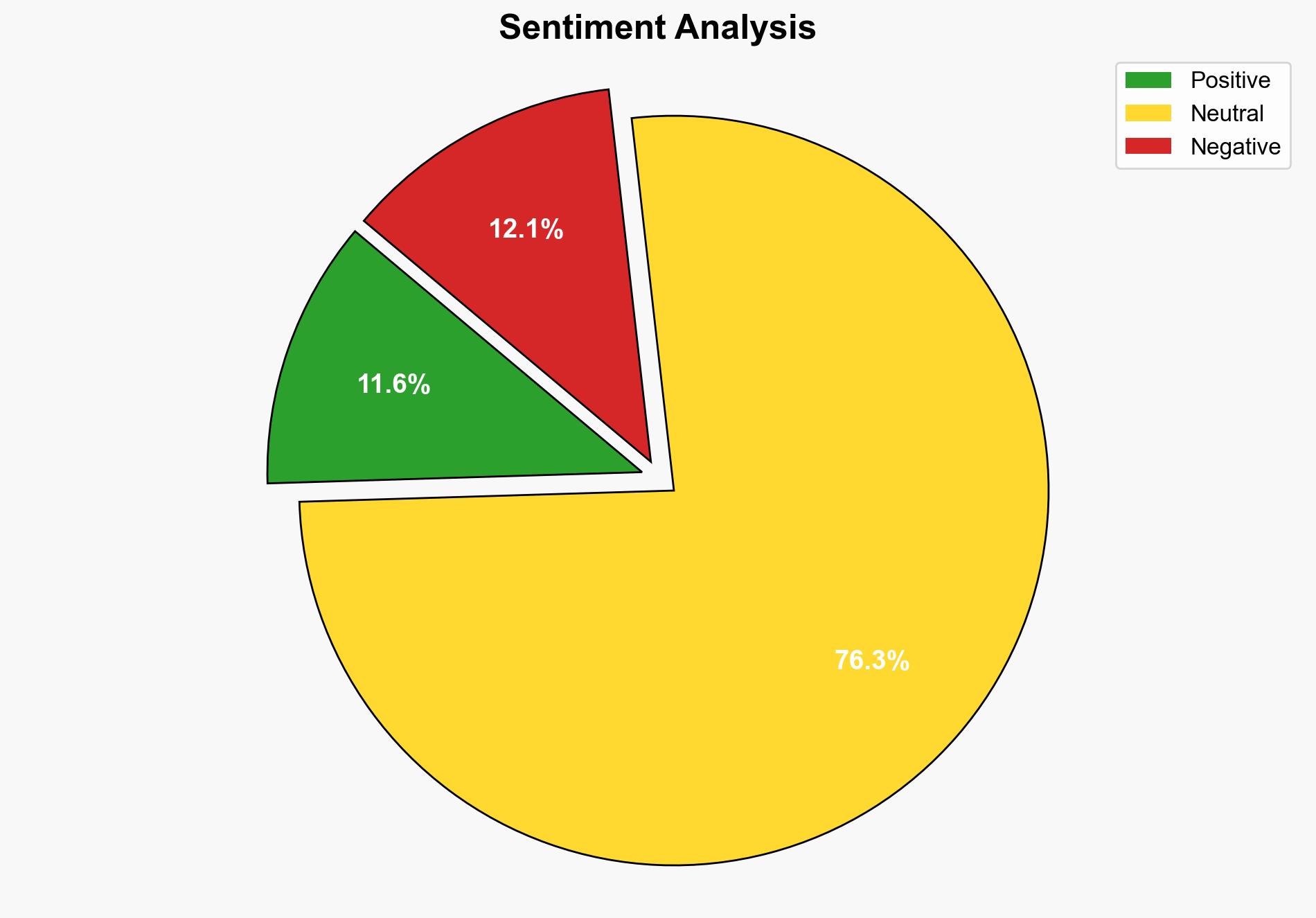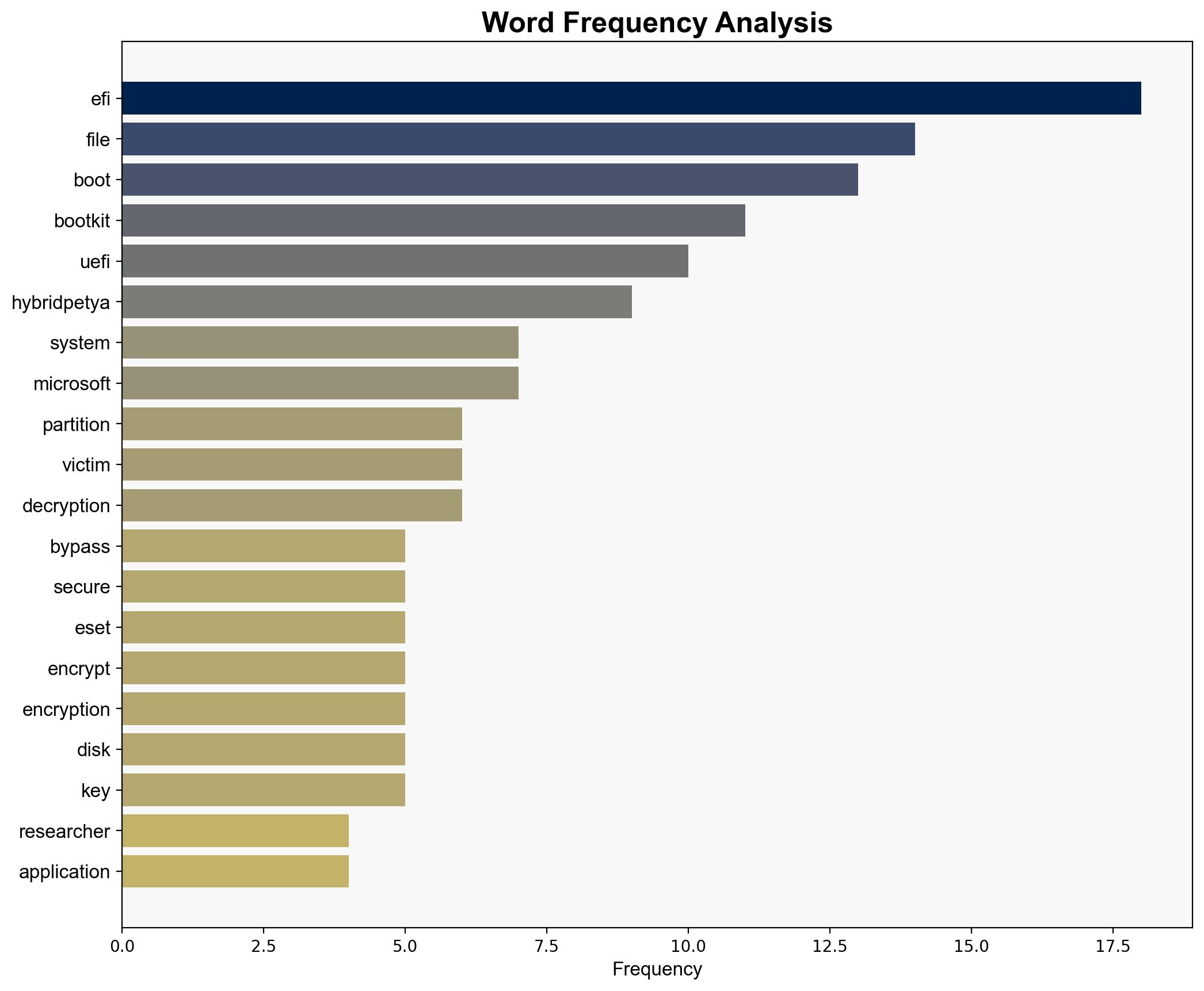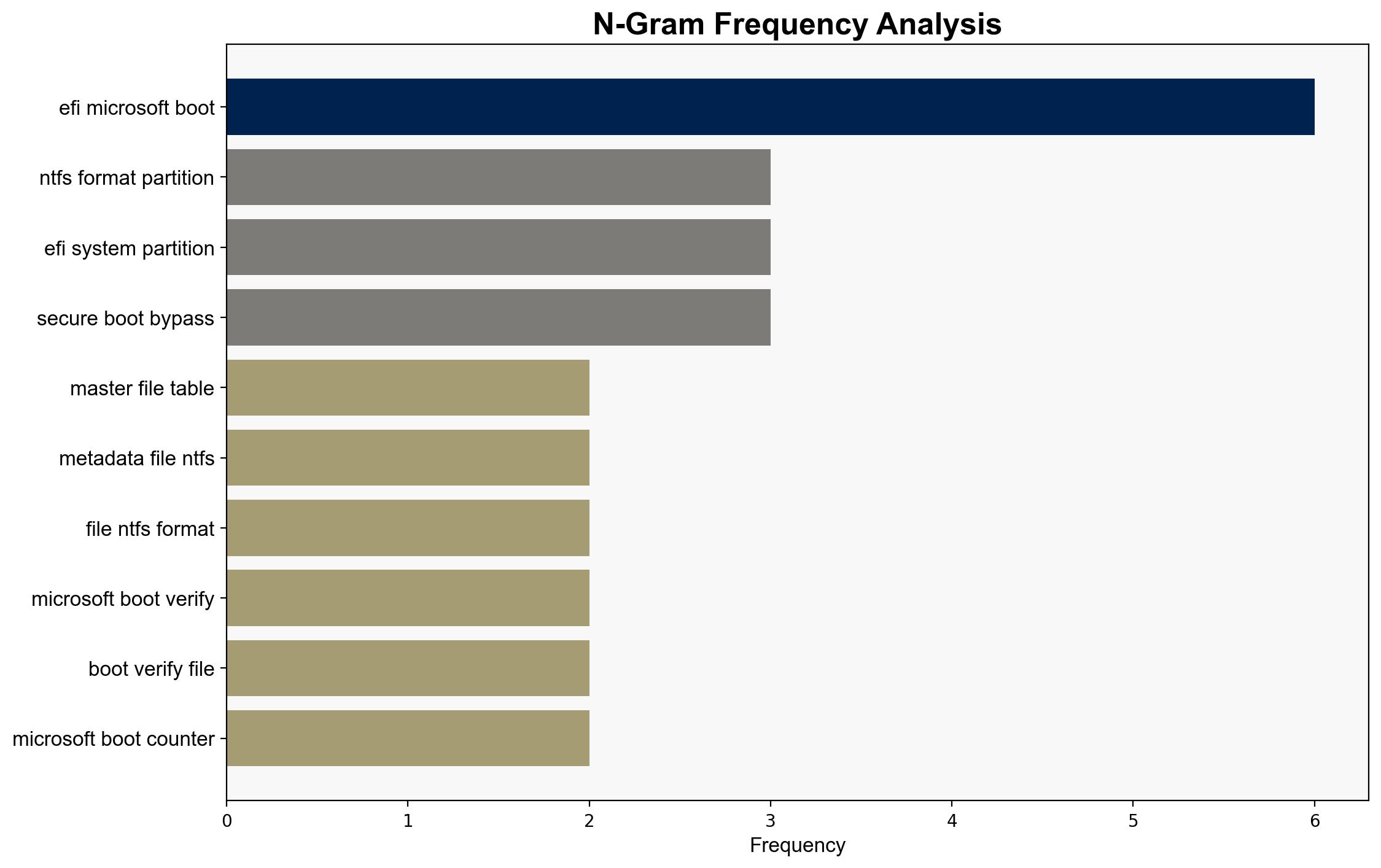New HybridPetya Ransomware Bypasses UEFI Secure Boot With CVE-2024-7344 Exploit – Internet
Published on: 2025-09-12
Intelligence Report: New HybridPetya Ransomware Bypasses UEFI Secure Boot With CVE-2024-7344 Exploit – Internet
1. BLUF (Bottom Line Up Front)
The emergence of HybridPetya, a ransomware capable of bypassing UEFI Secure Boot using CVE-2024-7344, poses a significant cybersecurity threat. The most supported hypothesis suggests that this ransomware is a sophisticated evolution of previous Petya strains, likely developed by an advanced threat actor with substantial resources. Confidence level: High. Recommended action: Immediate patching of vulnerable systems and enhanced monitoring of UEFI firmware integrity.
2. Competing Hypotheses
Hypothesis 1: HybridPetya is a direct evolution of the Petya/NotPetya ransomware, developed by a state-sponsored actor aiming to disrupt critical infrastructure and extract financial gains through ransom payments.
Hypothesis 2: HybridPetya is a new strain developed by a cybercriminal group leveraging publicly disclosed vulnerabilities to maximize financial gain without state sponsorship.
Using Analysis of Competing Hypotheses (ACH), Hypothesis 1 is better supported due to the complexity of the UEFI Secure Boot bypass and the integration of a sophisticated bootkit, indicating access to advanced resources and expertise typically associated with state actors.
3. Key Assumptions and Red Flags
Assumptions include the belief that the ransomware’s complexity necessitates state-level resources, and that the use of CVE-2024-7344 was opportunistic rather than targeted. Red flags include the lack of direct attribution to a specific actor and the possibility of deception in the ransomware’s origin or intent. Missing data on the exact distribution method and initial infection vector could indicate blind spots in detection capabilities.
4. Implications and Strategic Risks
The ransomware’s ability to bypass UEFI Secure Boot could lead to widespread system compromises, affecting critical infrastructure and causing economic disruptions. The potential for cascading threats includes the exploitation of similar vulnerabilities by other actors. Geopolitically, this could escalate tensions if attributed to a state actor, especially if critical infrastructure is targeted.
5. Recommendations and Outlook
- Immediate deployment of patches for CVE-2024-7344 across all systems.
- Enhance monitoring and logging of UEFI firmware changes to detect unauthorized modifications.
- Conduct scenario planning exercises to prepare for potential widespread ransomware attacks.
- Best-case scenario: Rapid patching and response mitigate the threat with minimal disruption.
- Worst-case scenario: Delayed response leads to significant economic and operational impacts.
- Most likely scenario: Mixed outcomes with some sectors effectively mitigating the threat while others face disruptions.
6. Key Individuals and Entities
Martin Smolr, a security researcher, is noted for his analysis of HybridPetya. ESET, a Slovakian cybersecurity company, is involved in the discovery and analysis of the ransomware.
7. Thematic Tags
national security threats, cybersecurity, counter-terrorism, regional focus





